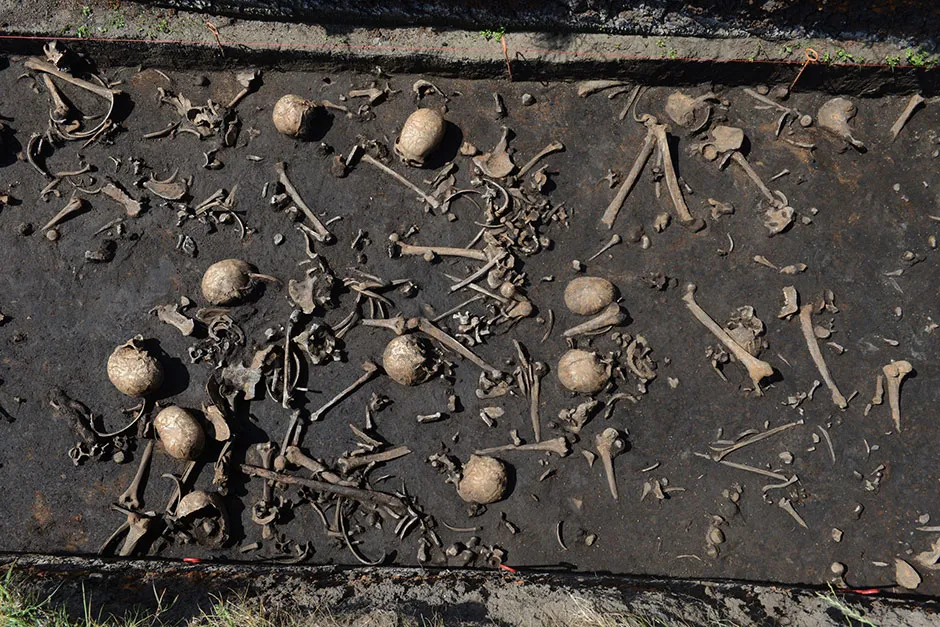It only took a few thousand years for the human ability to digest the milk sugar lactose after infancy to spread throughout Central Europe, a study suggests.
Researchers analysed genetic material from the bones of individuals who had fallen in a conflict around 1200 BC on the banks of the Tollense, a river in present-day Germany. They found that around one in eight of the assumed warriors had a gene variant that enabled them to break down the lactose in milk.
Population geneticist Professor Joachim Burger, of Johannes Gutenberg University Mainz (JGU), said: “Of the present-day population living in this same area, around 90 per cent have this lactase persistence.
“This is a huge difference when you consider that there cannot be many more than 120 human generations between then and today.”
Read more about human evolution:
The study, published in Current Biology, found that aside from lactase persistence and a few other genetic variants, the genomes of the Tollense people are similar to those of today’s inhabitants of northern Germany and the Baltic Sea region.
Professor Daniel Wegmann, of the University of Fribourg in Switzerland, said: “The only way to explain this difference between these Bronze Age people and those of today is very strong natural selection.
“We conclude that over the past 3,000 years, lactase-persistent individuals had more children or, alternatively, those children had better chances of survival than those without this trait.”

Prof Burger added: “In each generation lactase-persistent individuals have a 6 per cent greater chance of surviving to reproductive age than non-lactase-persistent individuals.”
But researchers say there is still no answer to why being able to digest the sugar in milk after infancy provided such a big evolutionary advantage.
The study also analysed the genetic material in Bronze Age bones found in eastern and south-eastern Europe for comparison. Scientists found these also showed low frequencies of lactase persistence.
Read more about archaeology:
- Bronze Age musical instruments made from human bone
- Mummified animals 3D-scanned 2,000 years after death
Researchers say the conflict in the Tollense valley is considered the oldest known battle in Europe.Remains were first discovered there in the 1990s, and for more than 10 years archaeologists have been systematically searching a kilometre-long section along the river.
The bones of more than 100 individuals have been discovered, many of them exhibiting signs of violent combat.Many still contain arrowheads, while some skulls look to have been crushed by blunt objects.
Reader Q&A: Does milk really build healthy bones?
Asked by: Christine Bressat, West Sussex
The body needs a regular intake of calcium for a range of needs, not least building and maintaining bones. If it doesn’t get enough calcium from the diet, it will extract it from bones. Although some disagree on the importance of dairy products, they are undeniably good sources of absorbable calcium.
Healthy bones also require vitamin D and potassium. It’s a good idea to boost calcium levels by eating plenty of leafy vegetables, beans and seeds.
Read more: